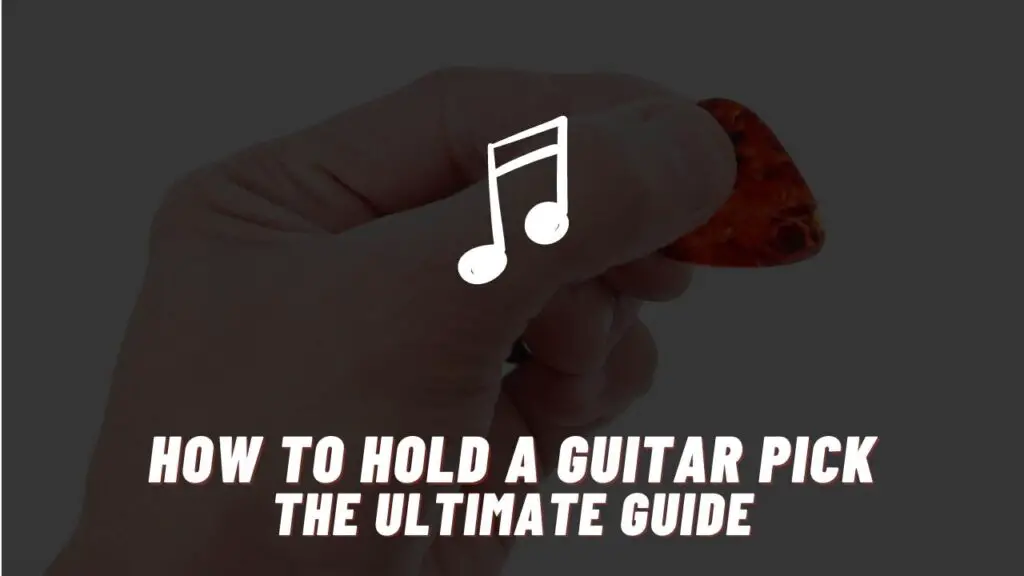When you get down to it, a lot of the magic of the baritone guitar is in the tuning. One of the main reasons people create music on a baritone is because of the deep and rich tones created by playing in a lower register.
However, sadly, the average baritone player never ventures beyond standard tuning and thus never experiences the instrument’s full potential. If you want to go beyond the average player, have a good read of this guide, bookmark it, experiment with the different tunings, and have fun!
So, check the batteries in your chromatic tuner. It’s time to twist some pegs and adjust some strings. Let’s dive in and explore all the most common traditional and alternative baritone guitar tunings.
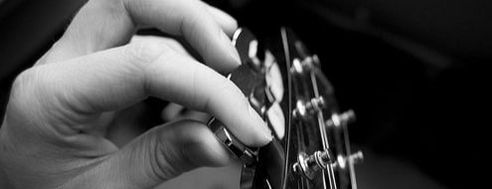
B Standard Tuning for Baritone Guitar (aka. Perfect Fourth)
Strings, Low to High: B E A D F♯ B
This is quite possibly the most popular baritone tuning. It’s a perfect fourth lower than a standard guitar and offers a perfectly divine playing experience, providing a dramatically different tonal pallet when compared with a standard guitar while also providing more string tension than A standard tuning (see below). On many baritones, the increased string tension will permit more aggressive playing.
A Standard Tuning for Baritone Guitar (aka. Perfect Fifth)
Strings, Low to High: A D G C E A
A standard tuning is a popular option for baritone guitar players and as low as some will dare go. A perfect fifth lower than a standard guitar, this tuning sounds particularly glorious when used for fingerpicking or with drone tones.
On some baritone guitars, this tuning may result in buzzing when strumming aggressively. Others, such as the Taylor Special Edition 326ce, are a little more forgiving of A standard tuning.
Open A Tuning & Open B Tuning for Baritone Guitar
Open A Tuning – Strings, Low to High: A E A E A C#
Open B Tuning – Strings, Low to High: B F# B F# B D#
Open chord tunings are perhaps most commonly thought of as being used for playing with a slide or for fingerpicking. However, artists ranging from Mumford and Sons to The Rolling Stones have used open chord tunings.
As the name implies, strumming the guitar in the open position will create a major chord because the strings are tuned to only include the first (root), third, and fifth notes. Thus, when using open B tuning, strumming the open strings will create a B major chord.
To achieve open B tuning from B standard (perfect fourth) tuning, walk through the following five steps:
- Raise the 5th string to match the tone when you fret the 6th string at the 7th fret (F#)
- Raise the 4th string to match the tone when you fret the 5th string at the 5th fret (B)
- Raise the 3rd string to match the tone when you fret the 4th string at the 7th fret (F#)
- Raise the 2nd string to match the tone when you fret the 3rd string at the 5th fret (B)
- Raise the 1st string to match the tone when you fret the 2nd string at the 4th fret (D#)
NOTE: This simple tuning guide gives you the tools you need to dial up any open major tuning on a baritone or standard guitar. Just set your lowest string to the desired root tone and then adjust your strings accordingly.
Open A Tuning for Baritone Guitar (the Easy Way)
Strings, Low to High: A E A C# E A
Above, we offered instructions for achieving open chord tunings. However, there is a simpler way to achieve open tunings on a baritone guitar. I believe slide guitar players and fans of early Mumford and Son’s albums will love this open-chord tuning. When the open strings are played, you get an instant A-major chord. Bar straight across the fretboard anywhere on the guitar and you get another major chord. Move your bar through a I – IV – V progression, and you’ve got the beginnings of some delta-inspired blues!
To achieve open A tuning on a B standard (perfect fourth) tuned baritone guitar, take the following steps:
- Lower the 1st (high B), 2nd, and 6th string down a full step
- Lower the 3rd string (D) down half a step to C#
Of course, you can follow the same instructions for a baritone tuned to A-standard (perfect fifth) tuning. The resulting tuning will be open G. It should be noted that not all baritones will handle open G tuning well. Some models may display excessive string buzz if you go this low.
‘Half Nashville’ Tuning for Baritone Guitar (Pat Metheny Style)
Strings, Low to High: B E A^ D^ F# B (the “^” symbol denotes strings raised one octave above standard baritone tuning)
This alternative baritone tuning was popularized by Pat Metheny. It adds brightness and breadth to the baritone guitar, creating interesting voicing possibilities.
Check out the following video to get a feel for Pat Metheny’s ‘Half Nashville’ tuning in action.
Pat Metheny’s ‘Half Nashville’ tuning requires that you sub out the 3rd and 4th strings in your typical baritone string set for standard-gauge guitar strings and tune both one octave up from normal baritone tuning.
Thus, your typical baritone would be tuned (low to high) B, E, A^, D^, F#, and B. The “^” symbol denotes the raised octave. Pat tunes his baritone A to A, so if you want to follow more precisely in his sonic footsteps, try tuning your baritone to A, D, G^, C^, E, A.
NOTE: Don’t try this with your standard baritone string set – your strings and neck weren’t designed for that kinda tension.
To learn more about Pat Metheny’s ‘Half Nashville’ tuning for baritone guitar, check out our article ‘Half Nashville’ Tuning for Baritone Guitar – Pat Metheny Style.
Double Drop A (or G) Tuning for Baritone Guitar
Strings, Low to High: A E A D F♯ A
Double drop tuning can be thought of as the slightly more musical cousin to the popular drop D tuning. To achieve double drop tuning, simply lower the 1st and 6th strings one full step. On a B standard (aka. perfect fourth) tuned baritone, this means dropping your 1st and 6th strings down to A. On an A standard (aka. perfect fifth) tuned baritone, this means dropping your 1st and 6th strings down to G.
This tuning is wonderful for adding color and distinctiveness to otherwise simple chord progressions. Try it with any progression featuring open chord voicings, anything in the key of A (or G, if tuning down from a baritone in A standard tuning), or any fingerpicking number that you have enjoyed in drop D tuning on your standard guitar.
If you are not familiar with drop D tuning chord shapes, don’t worry. Most chord shapes crossover from standard tuning to drop tuning with minimal adjustments. Just keep in mind that 1) you will need to transpose the letter names of these chords while playing on your baritone and 2) you will need to occasionally let your high A or G ring to take full advantage of double drop tuning.
Easy Double Drop B Tuning With a Capo
Strings, Low to High: B F# B E G♯ B
With the right model of capo, you can achieve double drop B tuning in seconds with no tuner and not a single twist of the tuning pegs. My favorite model for taking advantage of this shortcut is the Kyser brand ‘Quick Change’ capo. With the Kyser Quick Change, double drop tuning becomes easy and quick. Simply attach the capo upside down, so the rubber brace that typically grips the back of the neck is on strings 2 through 4 (see picture) and you’ll achieve instant double drop tuning. Bear in mind that you are essentially raising the 2nd, 3rd, 4th, and 5th strings rather than dropping the 1st and 6th strings, so technically, this isn’t a ‘drop’ tuning, but it has the same effect and sound (but with different notes).
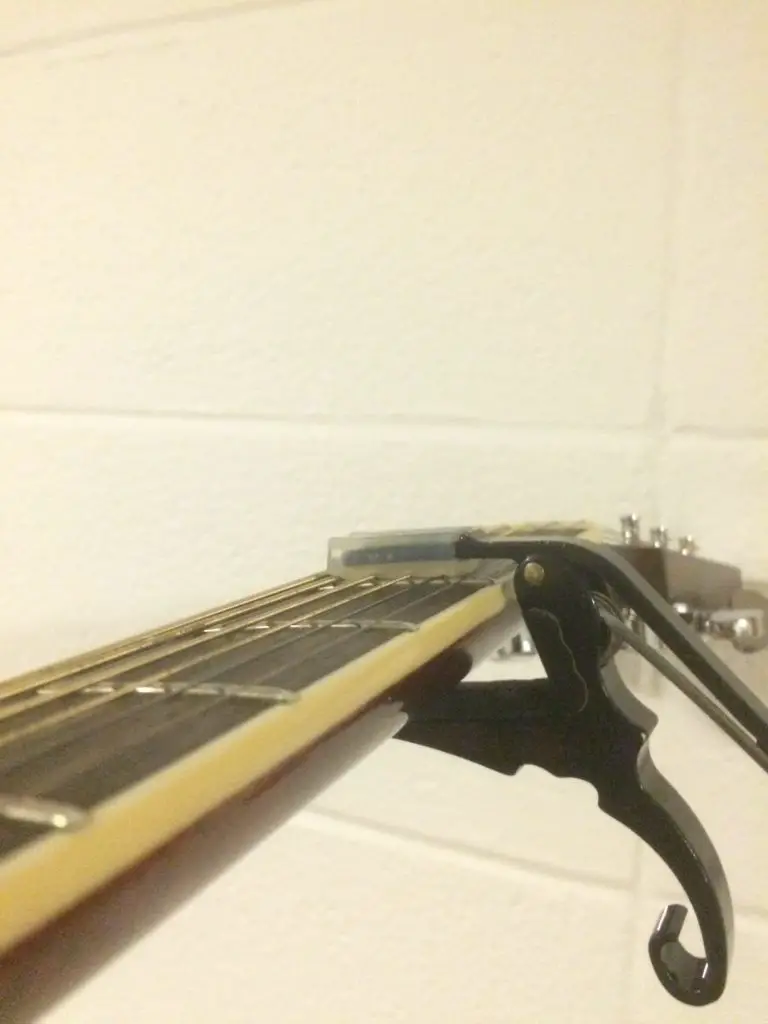
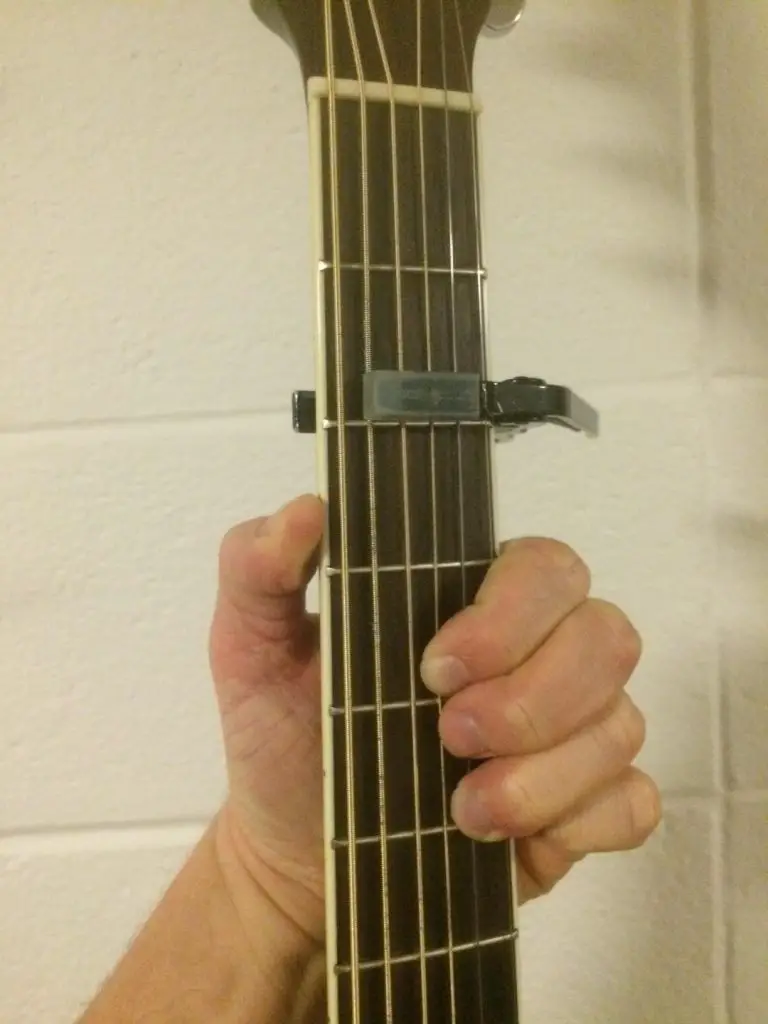
AEADEA Tuning for Baritone Guitar (aka. the Baritone Equivalent of DADGAD)
Strings, Low to High: A E A D E A
DADGAD tuning has been a folk and fingerpicking staple of the standard guitar world for years. However, the open-note drone tones it facilitates sound just as great (if not better) on a baritone. To achieve the Baritone equivalent of DADGAD tuning on a B standard (perfect fourth) tuned baritone guitar, you need to tune it to AEADEA. To do this, make the following adjustments:
- Drop the first and sixth strings down a whole step to A
- Lower the second string, F#, a whole step to E.
- Don’t touch anything else.
To get a feel for the tonal possibilities of AEADEA (Baritone equivalent of DADGAD), try a simple exercise of moving your index finger to create the following chords (see graphic below). First, strum your way through the chords, then try fingerpicking them.
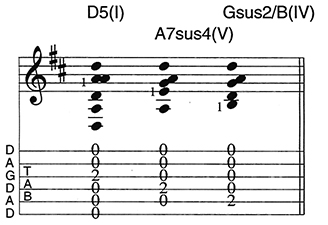
Wrapping Up
We hope you’ve enjoyed our complete guide to traditional and alternative tuning for baritone guitars! These tunings open up a world of sonic possibilities, so we suggest bookmarking this article so you can come back to it time and time again. You may find that simply changing to a new tuning inspires a whole new approach, and ultimately, new riffs, chord progressions, and songs. Have fun with it!

